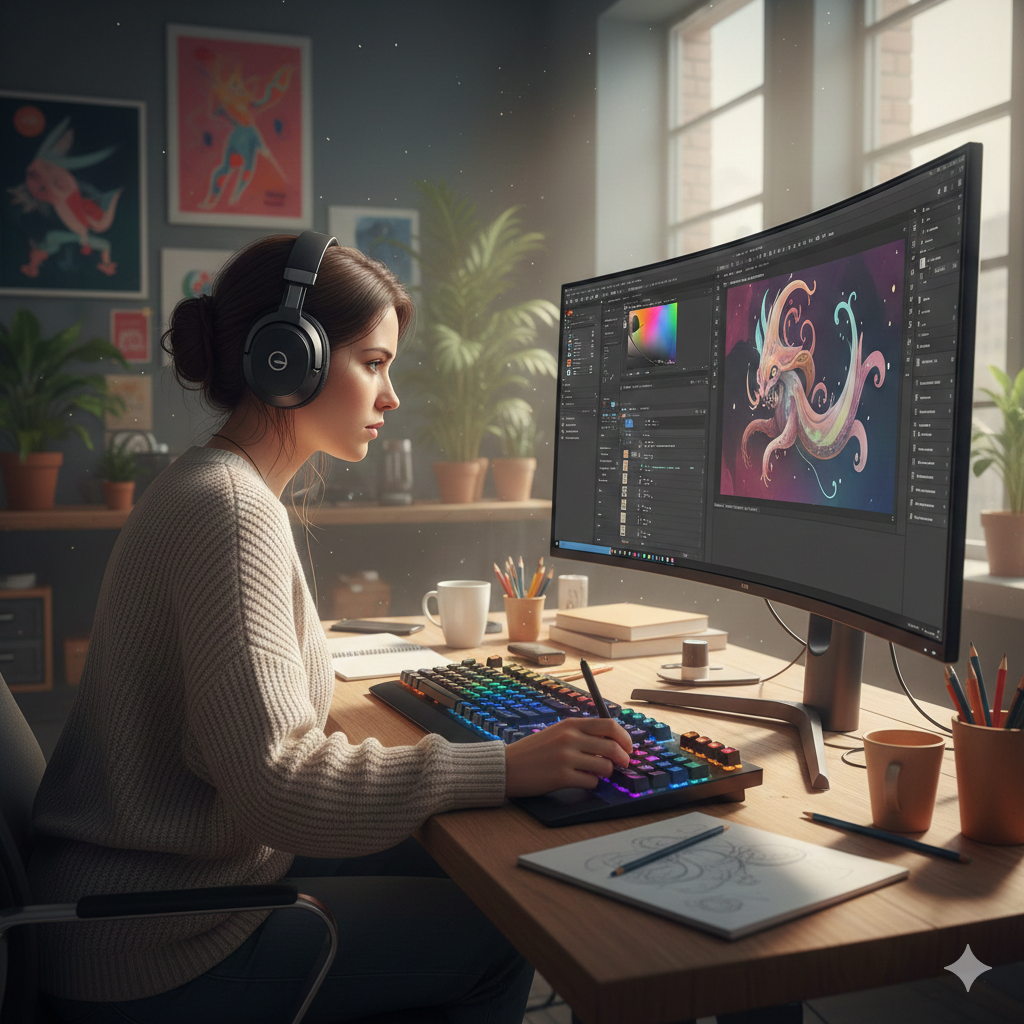CAD software : use your 3D files in your product documents
La computer-aided design (CAD) has become a must in modern industry. Every day, technical teams create 3D models, generate plans and produce technical visuals that feed into the entire product documentation chain.
However, a challenge remains: how to effectively transform these CAD files into attractive commercial materials ? How to switch from a Technical 3D model To one professional product catalog without wasting time or precision?
This process represents a major challenge for industrial companies that need to regularly update their technical documentation, their product sheets And their commercial catalogs.
The solution lies inautomation of this documentary production chain..
👉 Do your CAD files take time to use in layout? SolidDesigner makes your life easier by automatically integrating them into your InDesign documents.
What is CAD software?
CAD, or Computer-Aided Design, refers to all the software and techniques used to design, modify and analyze objects in 2D or 3D using a computer. This technology is revolutionizing the way engineers and designers develop their products.
Differences with CAD and PAO
It is important to distinguish CAD from two other acronyms that are often confused:
- CAD (Computer Aided Design) : limited to 2D technical drawing, with no design or calculation dimensions
- Desktop publishing (desktop publishing) : concerns the layout and editing of documents intended for printing or digital distribution
CAD is much more than just drawing. It integrates functionalities for parametric modeling, physical simulation and automatic generation of technical documentation.
Main software and formats
The CAD market offers several specialized solutions according to business sectors:
- SolidWorks : reference for mechanics and industry
- AutoCAD : versatile, widely used in architecture and engineering
- CATIA : high-end solution for aeronautics and automotive
- Fusion 360 : Autodesk cloud platform for SMEs
- Inventor : Autodesk solution for mechanical design
Each software generates its own file formats, often requiring conversions for integration into other tools.
What is CAD software used for?
3D design and modeling
The software CAO allow the creation of accurate three-dimensional models, integrating constraints Dimensional, materials and manufacturing tolerances. This approach parametric facilitates changes and ensures the consistency of technical data.
Simulations and validation
The tools Modern CADs integrate modules of simulation allowing the behavior of parts to be tested virtually: mechanical strength, thermal, fluid flows. This numerical validation reduces prototyping costs and accelerates product development.
Technical documentation generation
Beyond design, the CAO automatically produces the technical plans, exploded views and Nomenclatures required for manufacturing. These documents form the basis of all documentation. Commercial and technique.
Export for marketing materials
The models 3D are also used to generate marketing visuals : photorealistic renderings, animations, interactive product configurators. This versatility makes the CAO a strategic investment for the entire company.
📐 With SolidDesigner, integrate your CAD visuals directly into your product sheets, without re-entering or wasting time.
CAD and automated layout: connecting technical and commercial
The integration challenge
The passage of the CAD to commercial media traditionally represents a break in the process. Technical teams work with specialized software, while marketing teams use tools for DTP like InDesign.
This separation creates inefficiencies: Manually re-entering data, risk of errors, update times, inconsistencies between versions. For businesses managing large catalogs, these issues become critical.
Automation as a solution
The automation of the CAD/CAM chain transform this constraint into a competitive advantage. It allows you to:
- Synchronize automatically technical and visual data
- Drastically reduce documentary production deadlines
- Ensuring consistency between technical and commercial supports
- Personalize massively documents according to customer needs
Key steps in integrating with SolidDesigner
SolidDesigner facilitates this integration by automating the flow of data :
- Importing CAD files in native or exported formats
- Treatment and optimization visuals for print or the web
- Link to product data (PIM/ERP) to enrich content
- Automatic generation layouts Custom InDesign
CAD files and SolidDesigner: optimized integration
Supported formats
SolidDesigner accepts a wide range of formats from CAO :
- Vector PDF : ideal for high-resolution technical drawings
- SVG : perfect web format for diagrams and illustrations
- Rendered images : JPG, PNG, TIFF for photorealistic visuals
- 3D formats : compatibility with the main exchange standards
This flexibility guarantees a smooth integration, regardless of your existing technical environment.
Dedicated features
The tool offers features specifically designed to use files CAO :
- Smart reframe technical views according to the destination format
- Layer management to isolate certain elements (dimensions, annotations, etc.)
- Automatic optimization of the resolution according to the end use
- Dynamic update when source files change
Concrete use cases
An SME specializing in industrial equipment managed Manually its catalog of 500 references. Each product change required several hours of work to update plans, visuals, and technical data sheets.
Thanks to SolidDesigner, this company has automated 80% of the process. Engineers are changing their models CAO, and commercial materials are updated automatically. Treatment time increased from 2 hours to 15 minutes per reference.
💼 See how our customers connect their CAD files to their PIM and InDesign using SolidDesigner.
Why is this compatibility becoming an essential standard
Changing customer expectations
Professional buyers require accurate and up-to-date technical information. They compare solutions based on detailed documentation, including Listed plans, 3D views and full specifications.
This requirement pushes businesses to professionalize their technical communication while maintaining commercial responsiveness.
Differentiation issues
In an intense competitive context, the quality And the rapidity of provision of technical information become major differentiating factors. Businesses that are able to quickly customize their supports according to customer needs Take a decisive advantage.
Digital transformation of processes
THECAD/CAM integration is part of a broader approach of digitalization of industrial companies. It is articulated with other tools (PIM, DAM, CRM) to create a coherent and efficient digital ecosystem.
Optimize your documentary production chain
The effective exploitation of CAD files in your produced documents no longer falls under the option but under the strategic necessity. Companies that master this integration gain in responsiveness, in quality And in consistency.
SolidDesigner transform this technical constraint into competitive advantage. By automating the passage of 3D design to commercial supports, you free up time to focus on added value : product innovation and customer satisfaction.
The future belongs to businesses that know connect their technical tools to commercial challenges. This CAD/CAM convergence Represents a profitable investment in the short term And a sustainable differentiator.
🚀 Do you need to streamline the transition from CAD to your InDesign media? Test SolidDesigner for free and move on to frictionless creation!












.webp)






